Discover 6 hidden attractions, cool sights, and unusual things to do in Newbury (United States). Don't miss out on these must-see attractions: Coffin House, Dole–Little House, and Swett–Ilsley House. Also, be sure to include Hale-Boynton House in your itinerary.
Below, you can find the list of the most amazing places you should visit in Newbury (Massachusetts).
Table of Contents
Coffin House
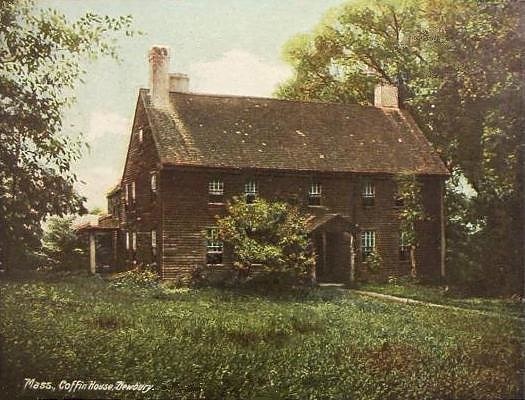
Museum in Newbury, Massachusetts. The Coffin House is a historic Colonial American house, currently estimated to have been constructed circa 1678. It is located at 14 High Road, Newbury, Massachusetts and operated as a non-profit museum by Historic New England. The house is open on the first and third Saturday of the month from June through October.
The house began in 1678 as a simple structure of two or possibly three rooms on land owned by Tristram Coffin, Jr. About 1713 the house was more than doubled in size, with new partitions added. In 1785, two Coffin brothers legally divided the structure into two separate dwellings, each with its own kitchen and living spaces. The property remained within the Coffin family until acquired by Historic New England in 1929.
Although the house was traditionally dated to 1654 (by Joshua Coffin, author of the 1845 history of Newbury), recent scientific studies have provided more accurate estimates. In 2002, the Oxford Dendrochronology Laboratory analyzed wooden beams from the structure and ascertained that donor trees were felled in winter 1676–1677 and 1677–1678 for the original structure, and winter 1712–1713 for the addition. This revised dating means that the Coffin House may no longer be the earliest example of the principal rafter/common purlin roof, although even so it is certainly one of the oldest extant examples. Coffin House is owned by Historic New England.[1]
Address: 14 High St, 01951 Newbury
Dole–Little House
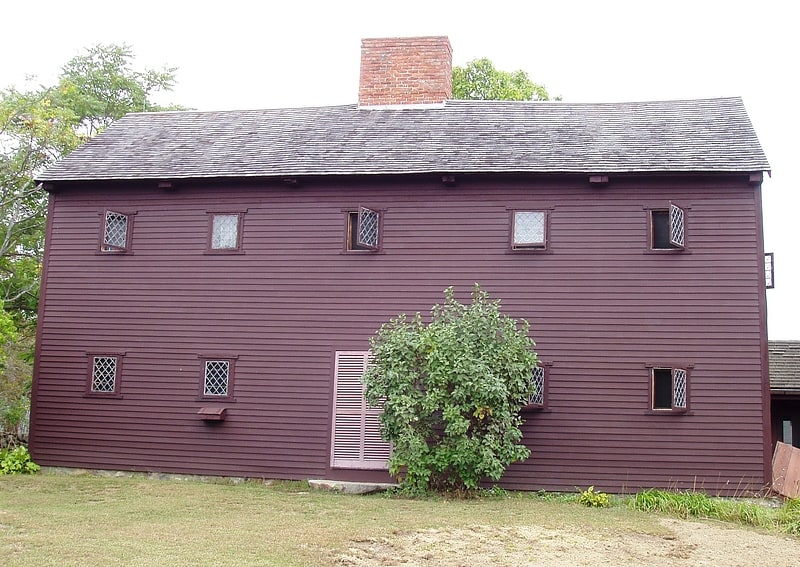
Museum in Newbury, Massachusetts. The Dole–Little House is a historic house at 289 High Road, Newbury, Massachusetts. It is now a non-profit museum operated by Historic New England and open to the public, for a fee, at rare intervals. Private tours can also be arranged.
The original house was built around 1715 with materials salvaged from an earlier structure (perhaps c. 1670) for Richard Dole, a cattleman. It was built a two-room, central-chimney construction with a small kitchen shed at the rear. This shed has since been replaced with a larger lean-to.
In 1954 the house was acquired by Florence Evans Bushee and restored to reflect its original period. During restoration, the lean-to was removed and reconstructed with new timbers, and a small-paned sash from the front of the house was moved to the lean-to. The paneling from one chamber was installed as an exhibition room at the National Museum of American History in Washington, D.C.; a copy replaces it in the original chamber. Historic New England received the title to the house after Mrs. Bushee's death in 1975.[2]
Swett–Ilsley House
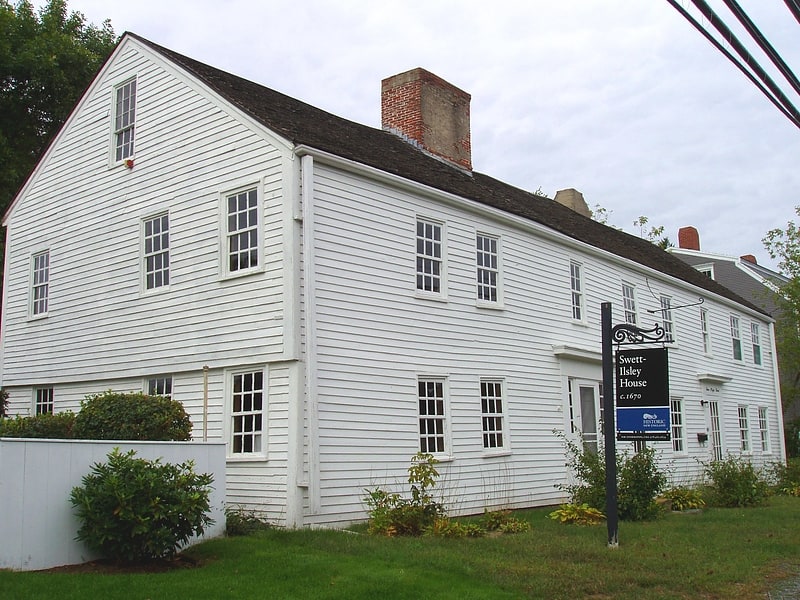
Museum in Newburyport, Massachusetts. The Swett–Ilsley House is a much extended Colonial house located at 4 High Road, Newbury, Massachusetts, United States. It is now owned by Historic New England, formerly the Society for the Preservation of New England Antiquities, and operated as a study museum.
The house's original section was built in 1670 by Stephen Swett, one of Newbury's first settlers, on a south-facing single-room plan with chimney bay. Under various owners, the house remained more or less unaltered until about 1720, when it was enlarged by addition of a second single-room household (with its own door) north of the original block. A new roof—made in part with salvaged rafters of the older roof—was built over the whole, changing the ridge pole direction from an east–west to a north–south axis. The chimney, then located at the northwestern corner of the main block, was retained, but its upper stack was probably modified at that time.
The house underwent a series of additions during the 18th and 19th centuries when it also served as a "tobacconist business," a chocolate mill, and a tavern. It was further extended to the north, although its irregular lot required that the eastern wall stopped two feet before the western wall. The original chimney was demolished, and a new central chimney was added to serve the 1670 and 1720 portions of the house.
In 1756, the house's irregular shape was somewhat squared when the purchase of land to the north yielded an opportunity to build a final northern addition of single-room plan with stair-hall and separate chimney. The building achieved its present form with the construction of a kitchen lean-to at the western end of the house, containing one of the largest fireplaces of the period, with three beehive ovens.
In 1911, the house was purchased by SPNEA, its first architectural acquisition. With advice from restoration architect Henry Charles Dean, SPNEA removed layers of lath and plaster to reveal original timbers, early 18th-century paneling, and one of the largest fireplaces in New England. Restoration stopped when funds were exhausted, before any long-gone original features like diamond-paned casements were recreated, resulting in a house with an unrestored 18th-century exterior and a partially restored interior reflecting both the 17th and early 18th centuries. After restoration, the house was rented to a series of tenants, who operated a tea room there until 1965 when the house became a study museum.[3]
Hale-Boynton House
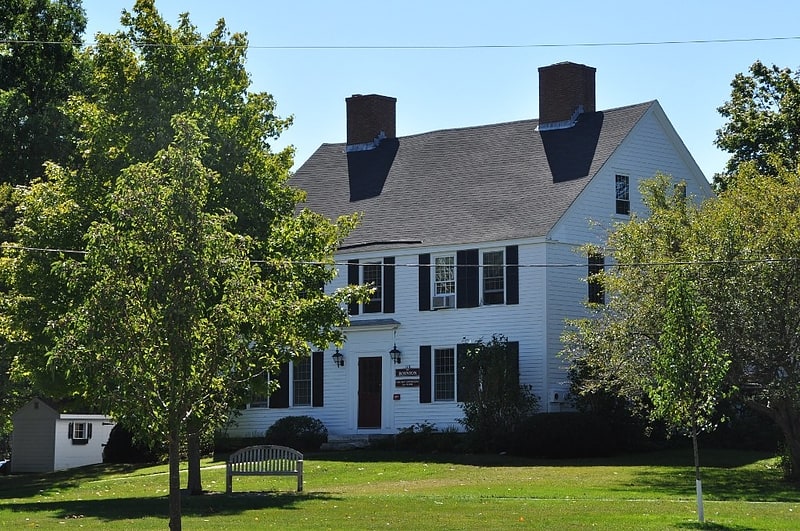
The Hale-Boynton House is a historic house on Middle Street in Newbury, Massachusetts. The house is now part of the campus of The Governor's Academy, where it is referred to as "Boynton House". It was built in 1764, and is notable for its well-preserved Georgian architecture, and for its association with the inventor E. Moody Boynton. The house was added to the National Register of Historic Places in 1983.[4]
James Noyes House

The James Noyes House is a historic First Period house at 7 Parker Street in Newbury, Massachusetts, USA. The house was built by the Reverend James Noyes, a Puritan pastor, who settled in Newbury in the mid-17th century. The Noyes family came from Wiltshire in England. The house dates from about 1646. It was added to the National Register of Historic Places in 1990.
The main block of the house is a 2+1⁄2-story wood-frame structure, five bays wide, with a large central chimney. When the house was first built, it was only a single room deep; around 1800 a 2+1⁄2-story cross-gable ell was added to the rear, which was further extended by a 1+1⁄2-story ell later in the 19th century. The interior rooms of the main block have Federal period styling, probably dating to the time of the first addition.[5]
Abraham Adams House
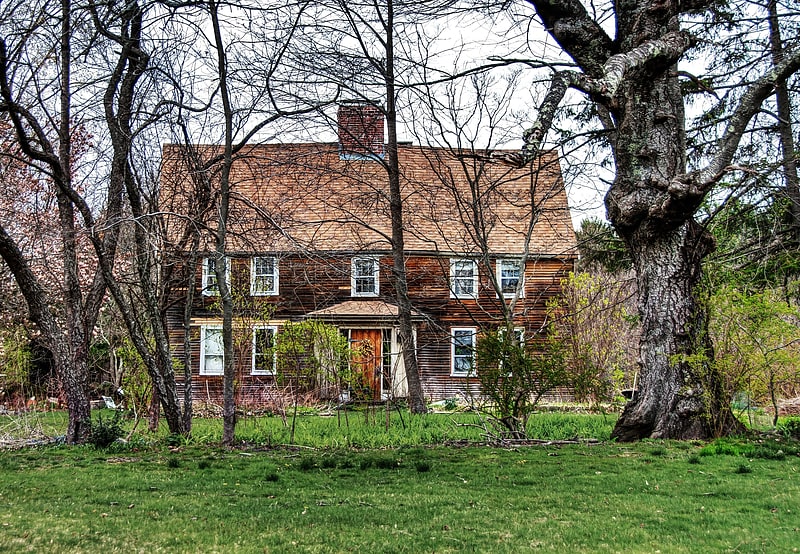
The Abraham Adams House is a historic First Period house in Newbury, Massachusetts. Its oldest portion dates to between 1705 and 1707, and its interior retains a number of First and Second Period colonial features. It was listed on the National Register of Historic Places in 1990.[6]